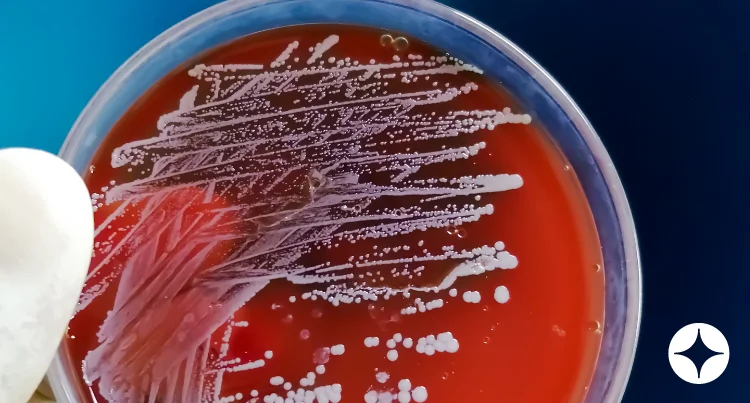
What Is Staphylococcus Aureus?
Staphylococcus aureus (commonly called a staph infection) is a common germ that nearly a third of the population carries on their skin. It's normally harmless in most cases, but can sometimes lead to serious infections.1 There are over 30 types of staph2, some of which are resistant to treatment. Staph often infects the skin when the bacteria enter through a cut or mucous membrane, but it can also cause an infection anywhere in the body.
How Common Is It?
The Staphylococcus bacteria is incredibly common and causes millions of infections each year. Most are mild and clear up with a prescribed course of antibiotics and cause no further problems. The bacteria is highly contagious and can live on surfaces for 24 hours3. Even those taking antibiotics remain contagious for 48 hours2. Practicing good hygiene like frequent hand washing can help prevent infections.
How Does It Spread?
Staph bacteria spread through skin contact, through coughing and sneezing and by sharing personal items like razors, bedding or towels. And yes, it can also be found inside improperly cleaned CPAP equipment. Unsafe food handling is another culprit. People often pick it up by touching a contaminated surface that carries the bacteria or pus from an infection, both of which are contagious. It can cause infections of the skin, bloodstream, bones, lungs and heart. Staphylococcus aureus becomes more dangerous if it enters into the body tissues or bloodstream4. Anyone can get a staph infection, including people who are otherwise healthy.
Staph Signs and Symptoms
Common signs of a staph infection are sometimes mistaken for other illnesses or minor skin irritations. Symptoms1,2 can include:
- Skin abnormalities, including boils and pimples.
- Cellulitis and folliculitis.
- Impetigo.
- Food poisoning.
- Pus-filled sores2 and abscesses.
- Endocarditis, an infection that targets the heart valves.
- Sepsis, a bacterial infection of the blood.
- Osteomyelitis, a bone infection.
- Pneumonia.
- Toxic shock syndrome5, which is a serious type of septicemia.
Staph can cause a variety of symptoms and health issues depending on which part of the body it affects.
Is Staphylococcus Aureus Dangerous?
Staph infections can be dangerous or even fatal. They typically only turn life-threatening6 when they enter deep into the body or into the bloodstream where they can cause a body-wide infection called septic shock. This can cause blood pressure to drop to dangerous lows.
People with chronic health conditions like cancer, eczema or diabetes are more susceptible. Other risk factors are a weakened immune system, undergoing surgery and spending time in the ICU.
How Should I Treat a Staphylococcus Infection?
It's important for anyone who has signs of a staph infection to seek medical treatment2. Antibiotics, oral or sometimes topical, are effective in treating most cases of staphylococcus infection. A medical care provider can diagnose the infection through an examination and testing. Sometimes a sample is required to test for the staph bacteria. Depending on the part of the body affected, this sample may be skin, stool, urine or blood. Severe infections may require hospitalization for an intravenous antibiotic or further treatment.
References
- CDC - Staphylococcus aureus Basics
- Cleveland Clinic - Staph Infection
- Medical News Today - Is staph infection contagious?
- National Library of Medicine - Staphylococcus aureus Infection
- Mayo Clinic - Toxic Shock Syndrome
- Mayo Clinic - Staph infections




